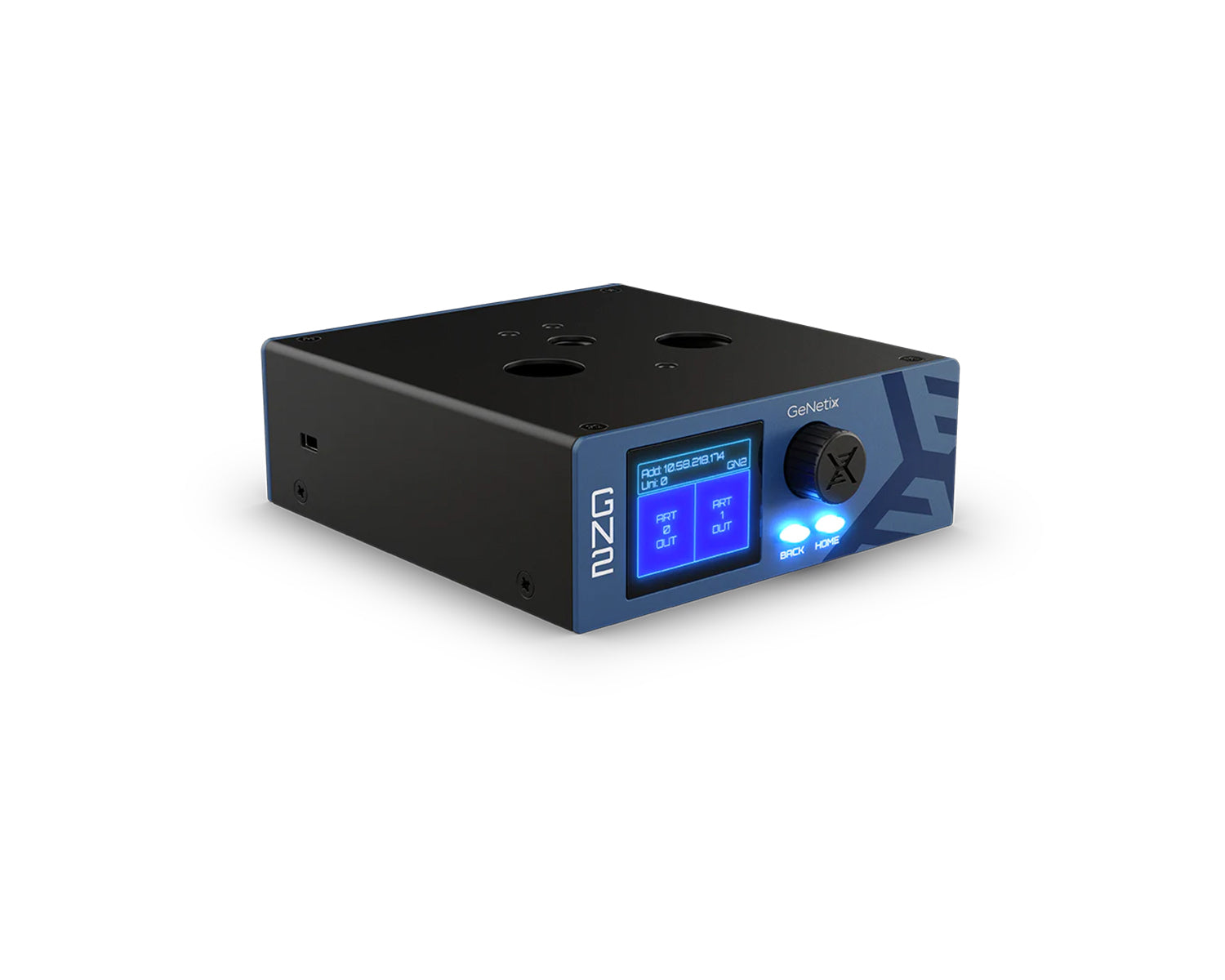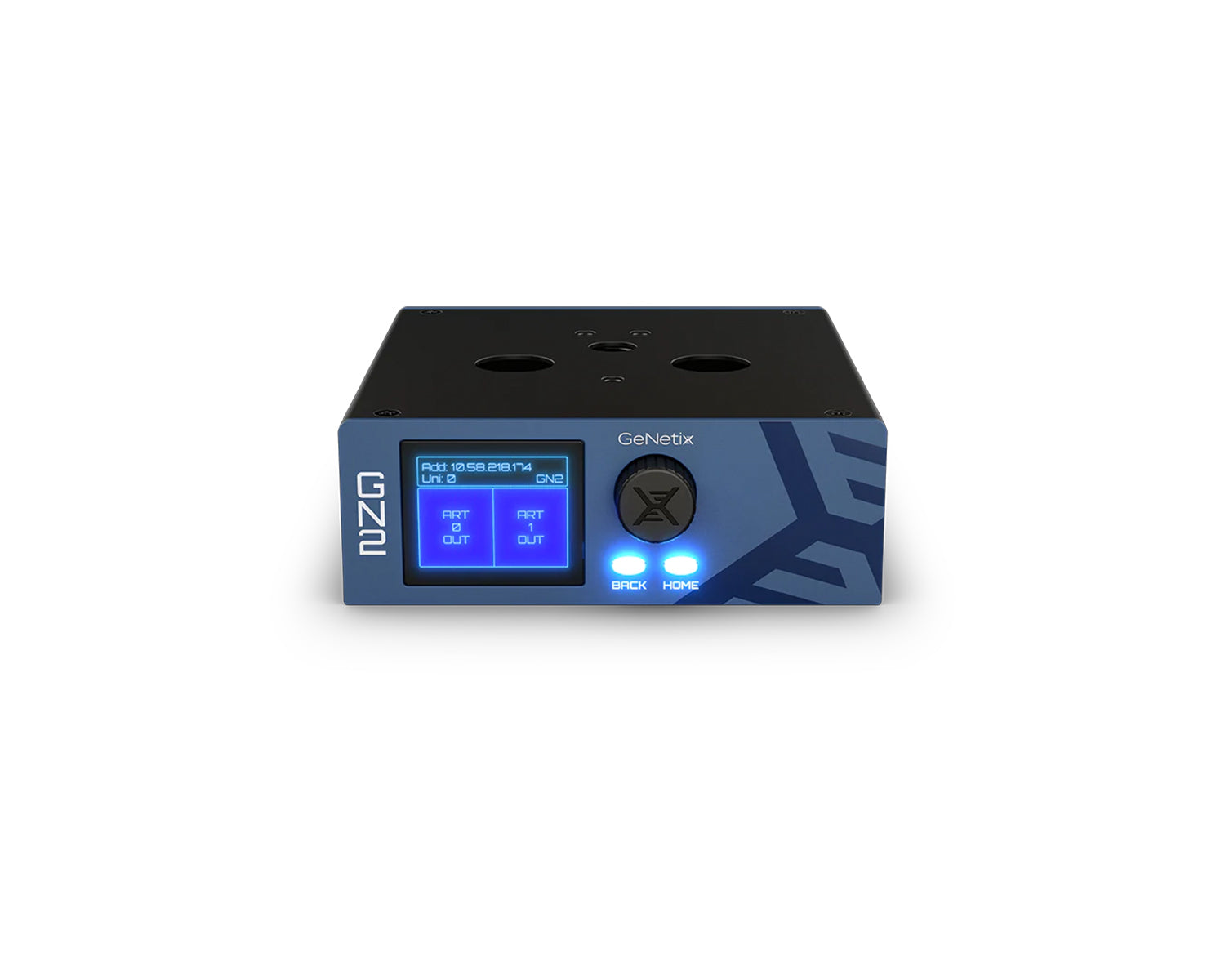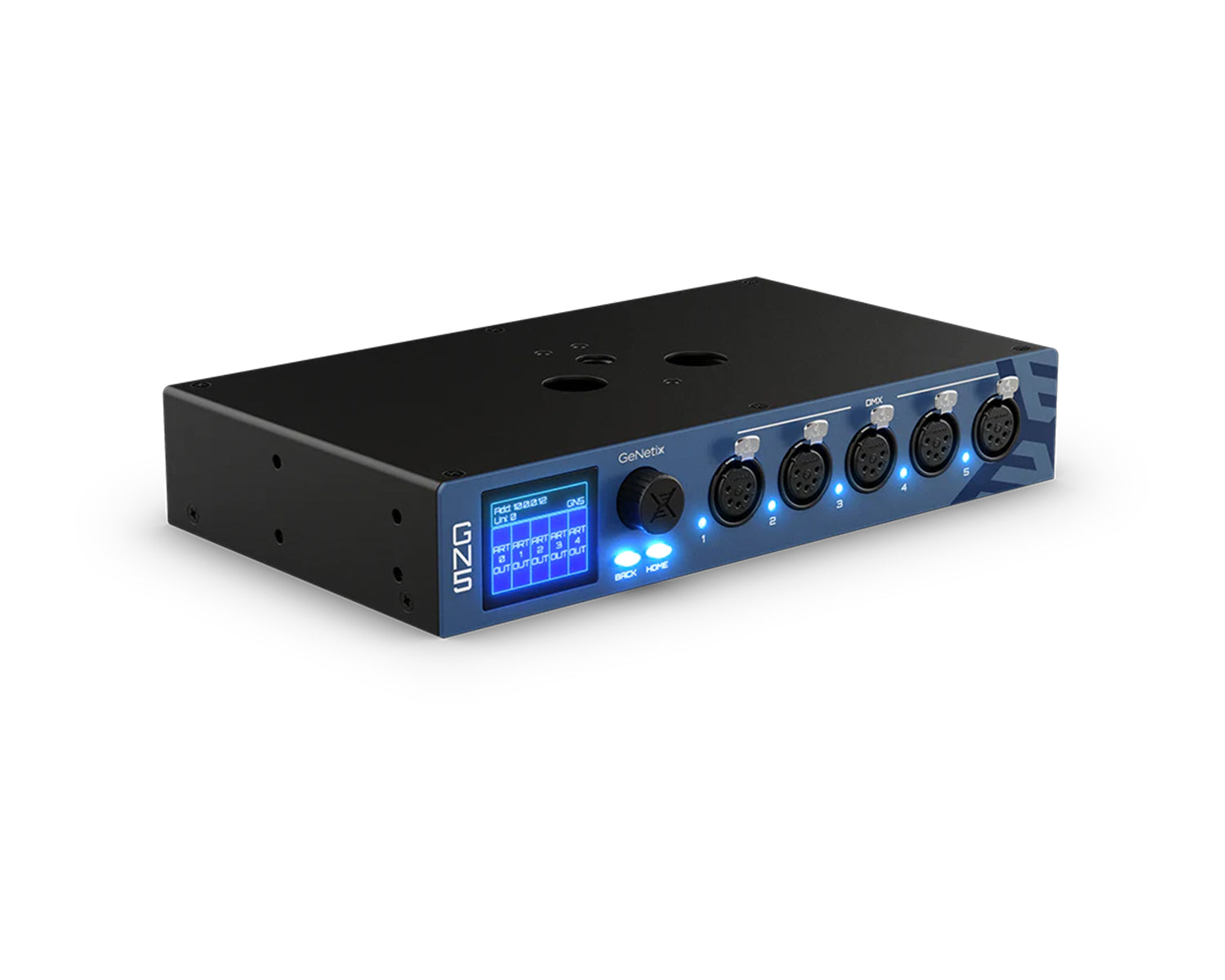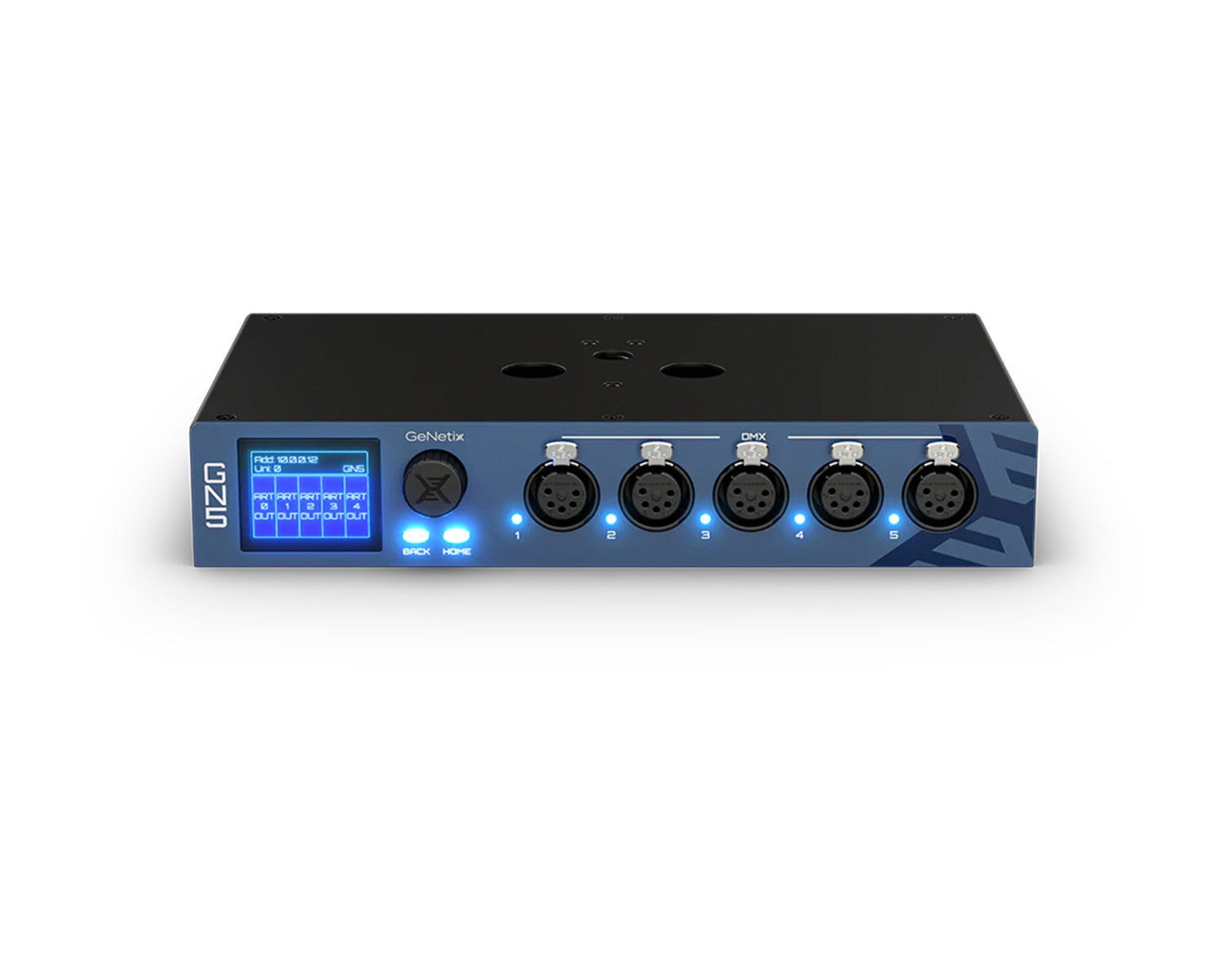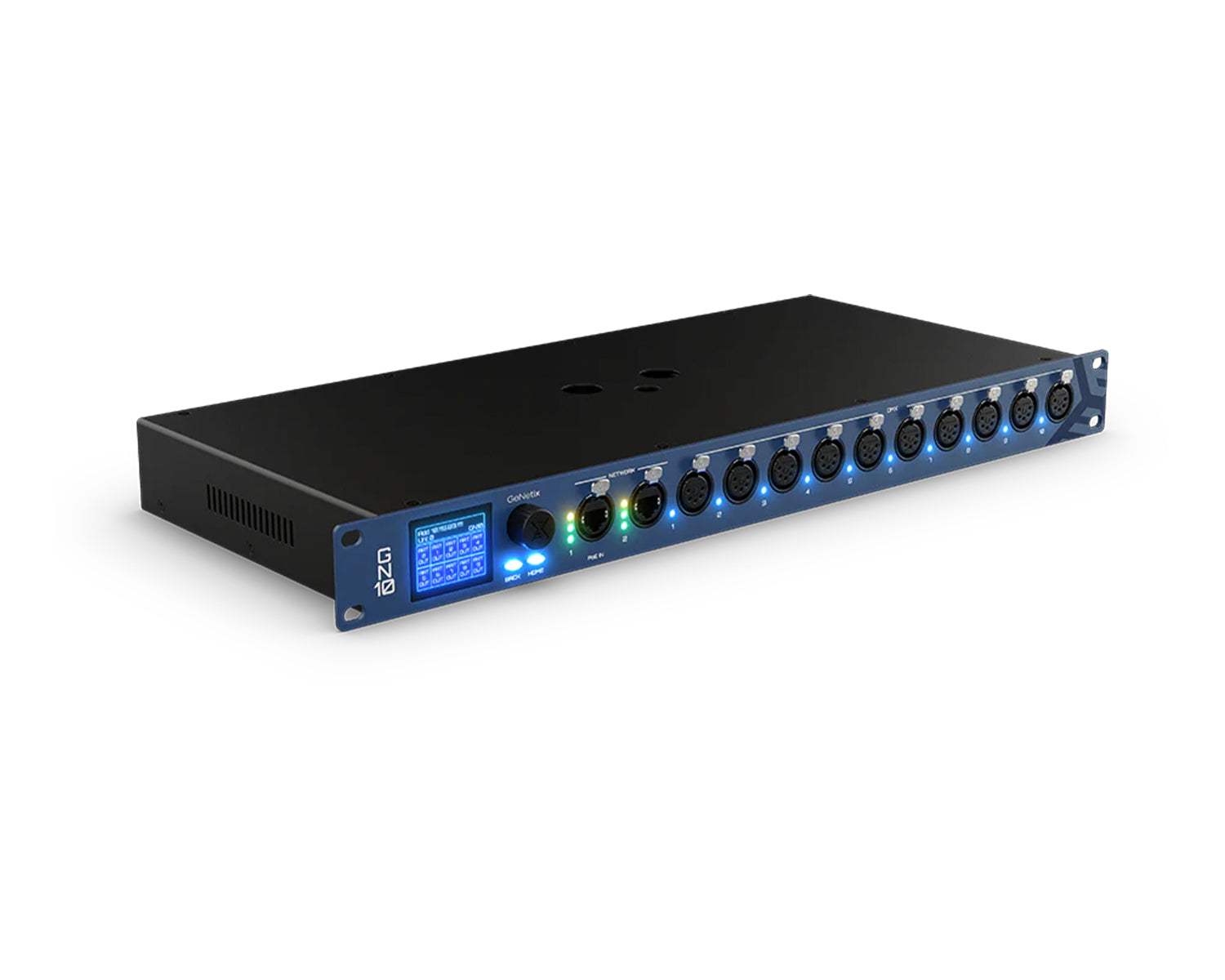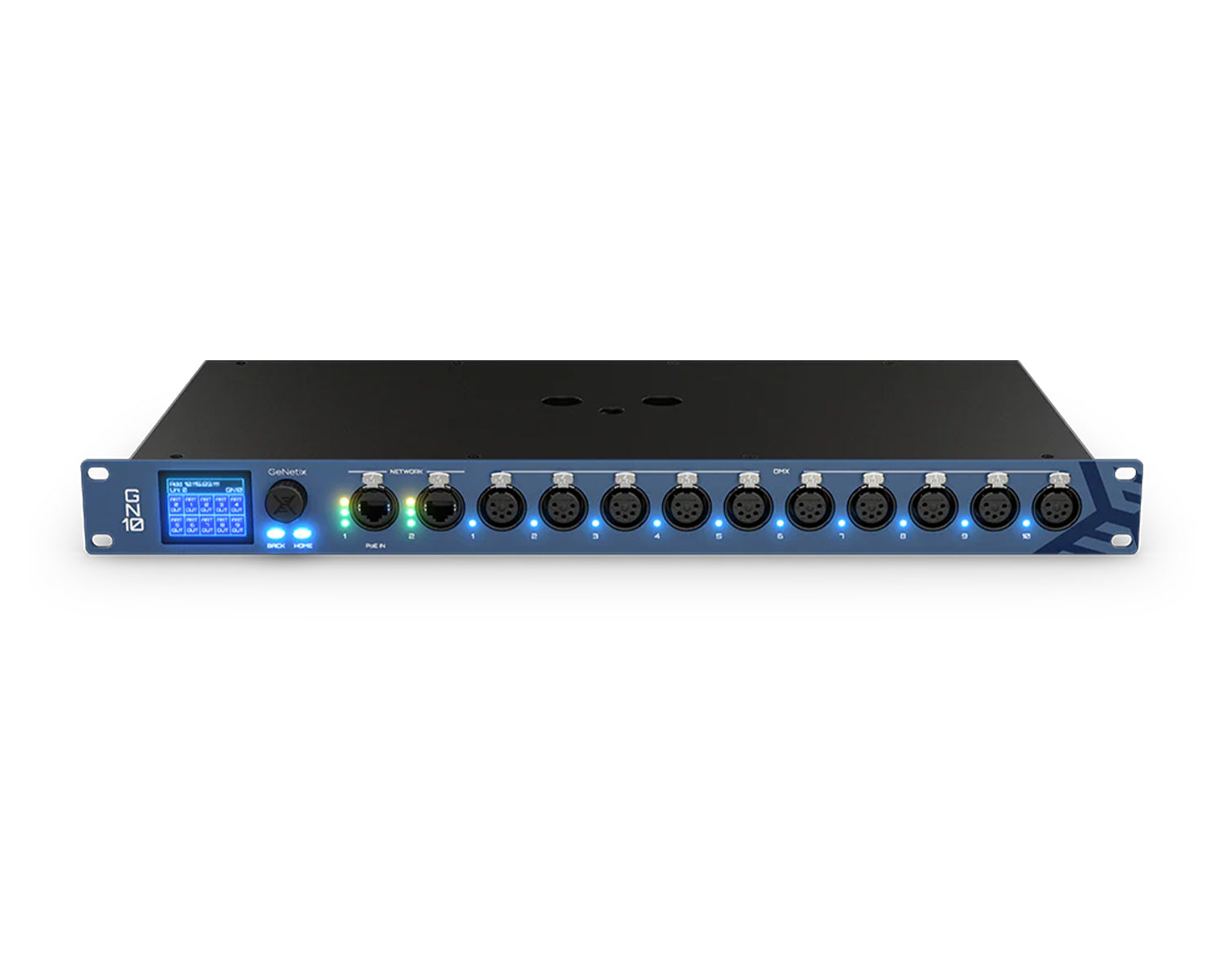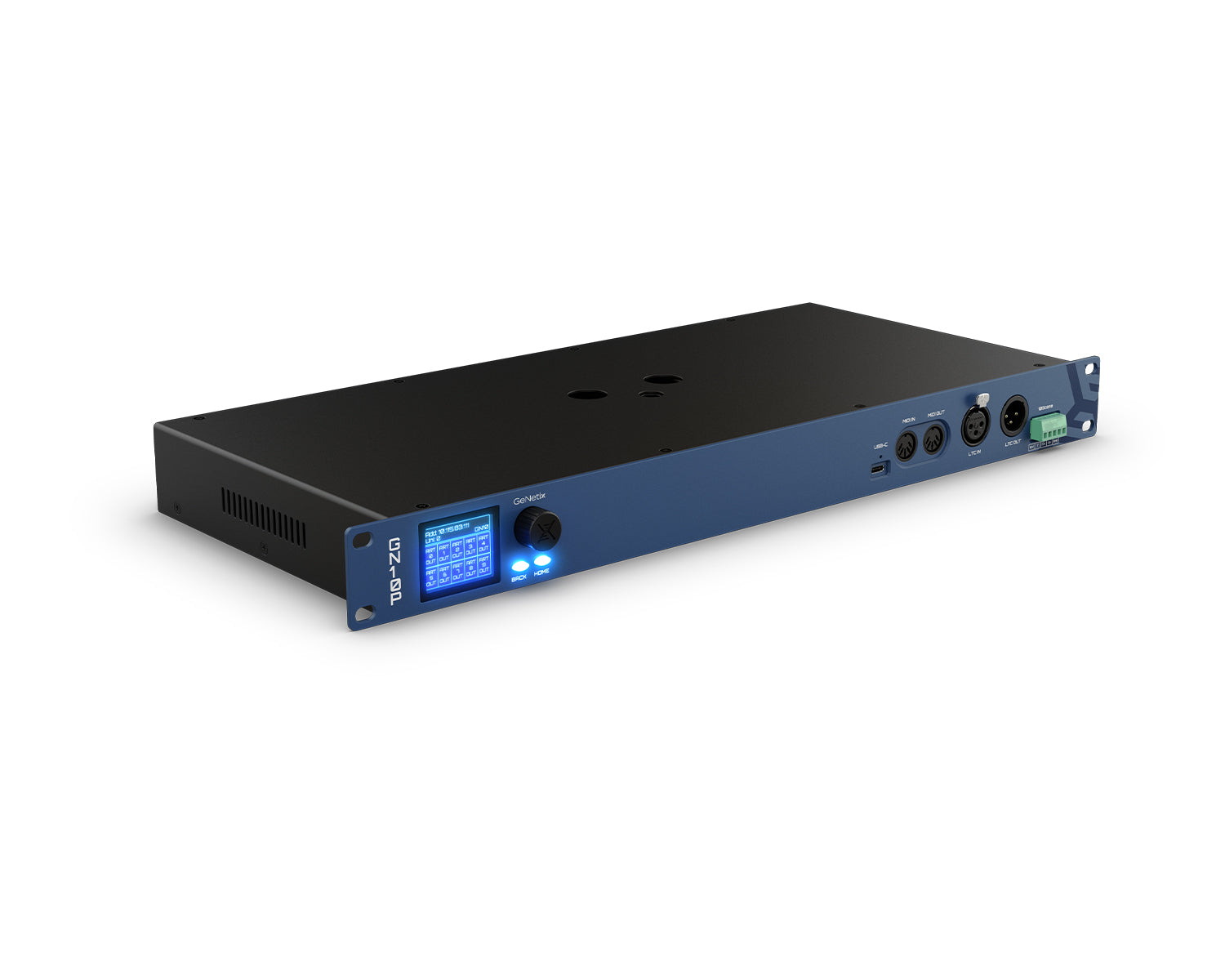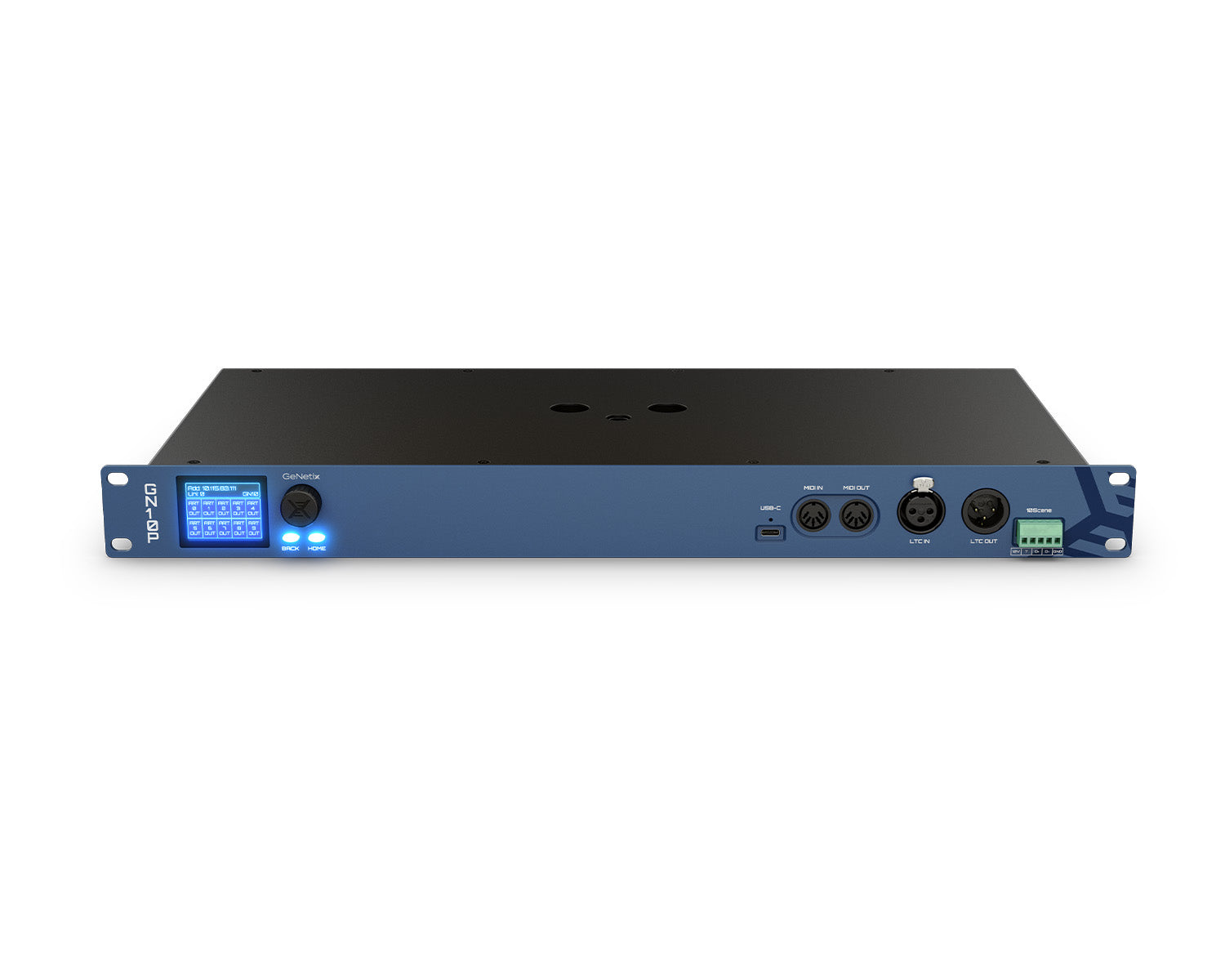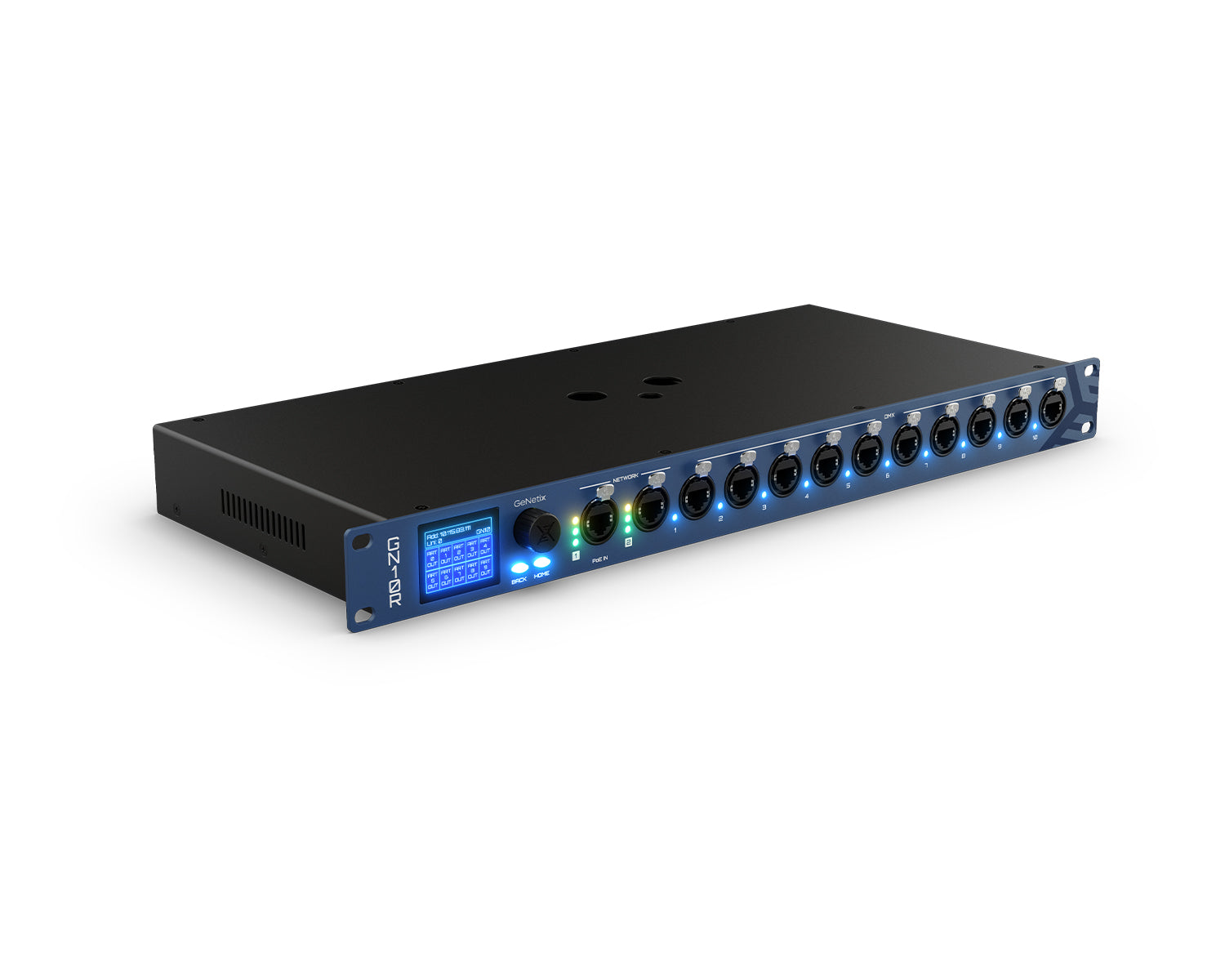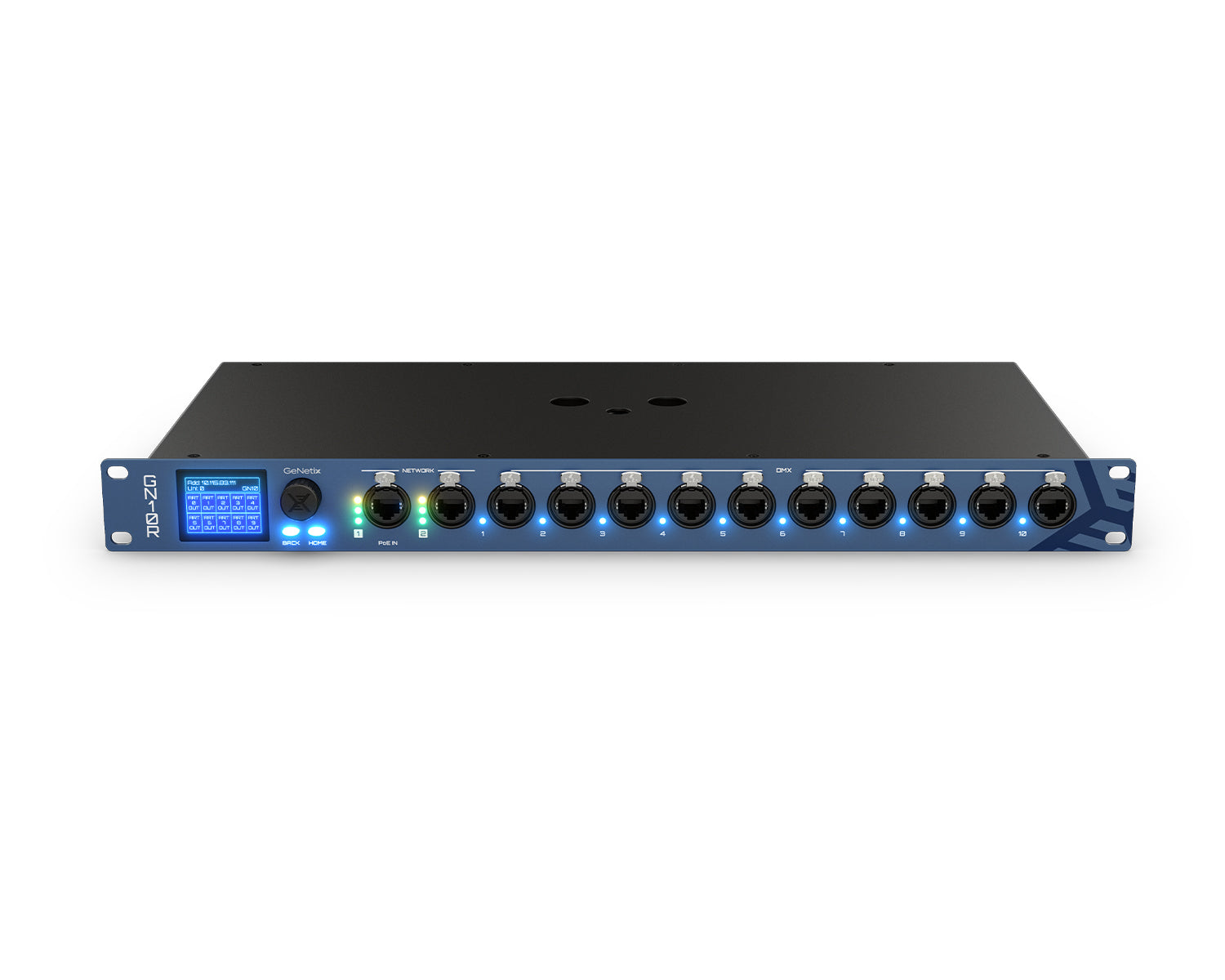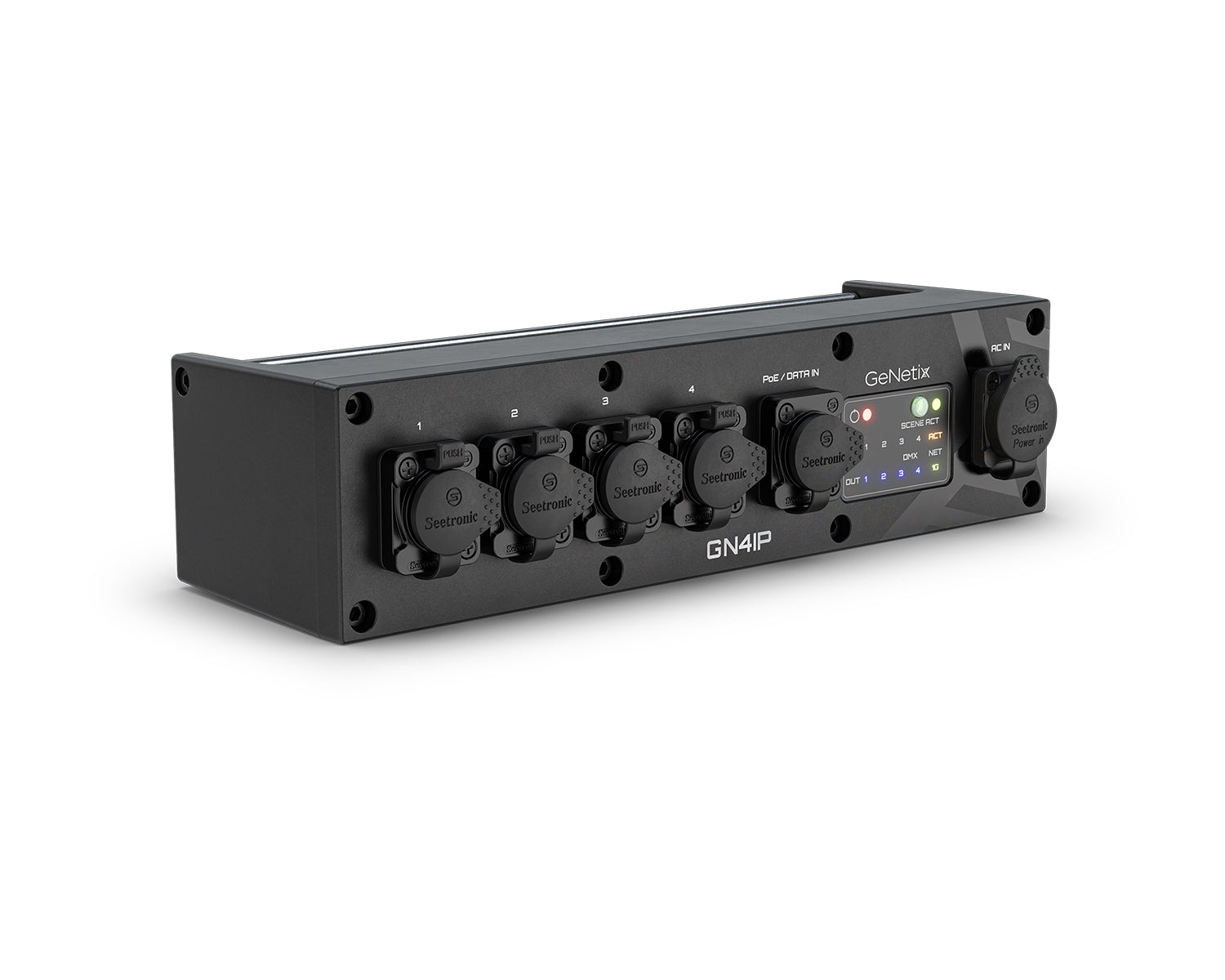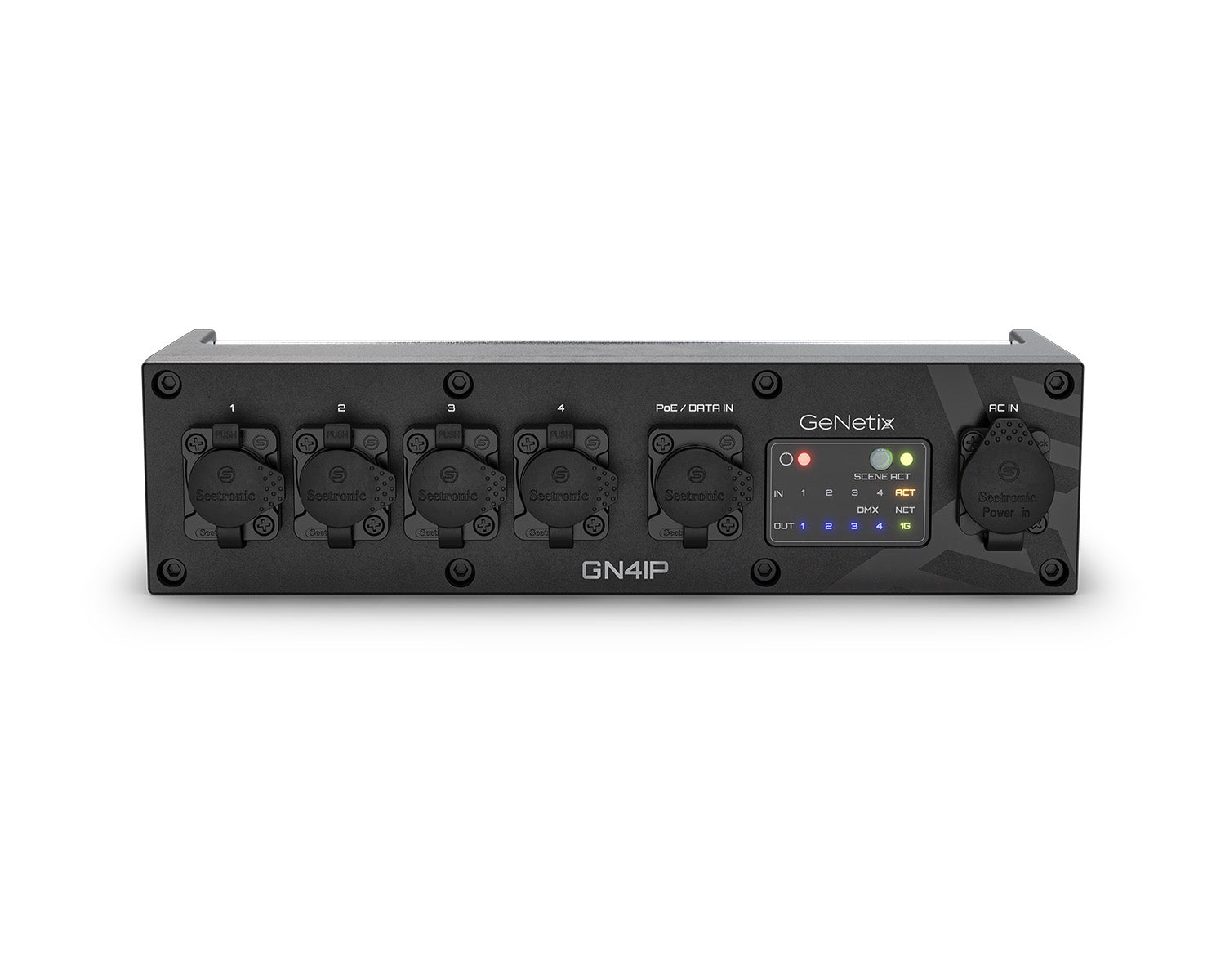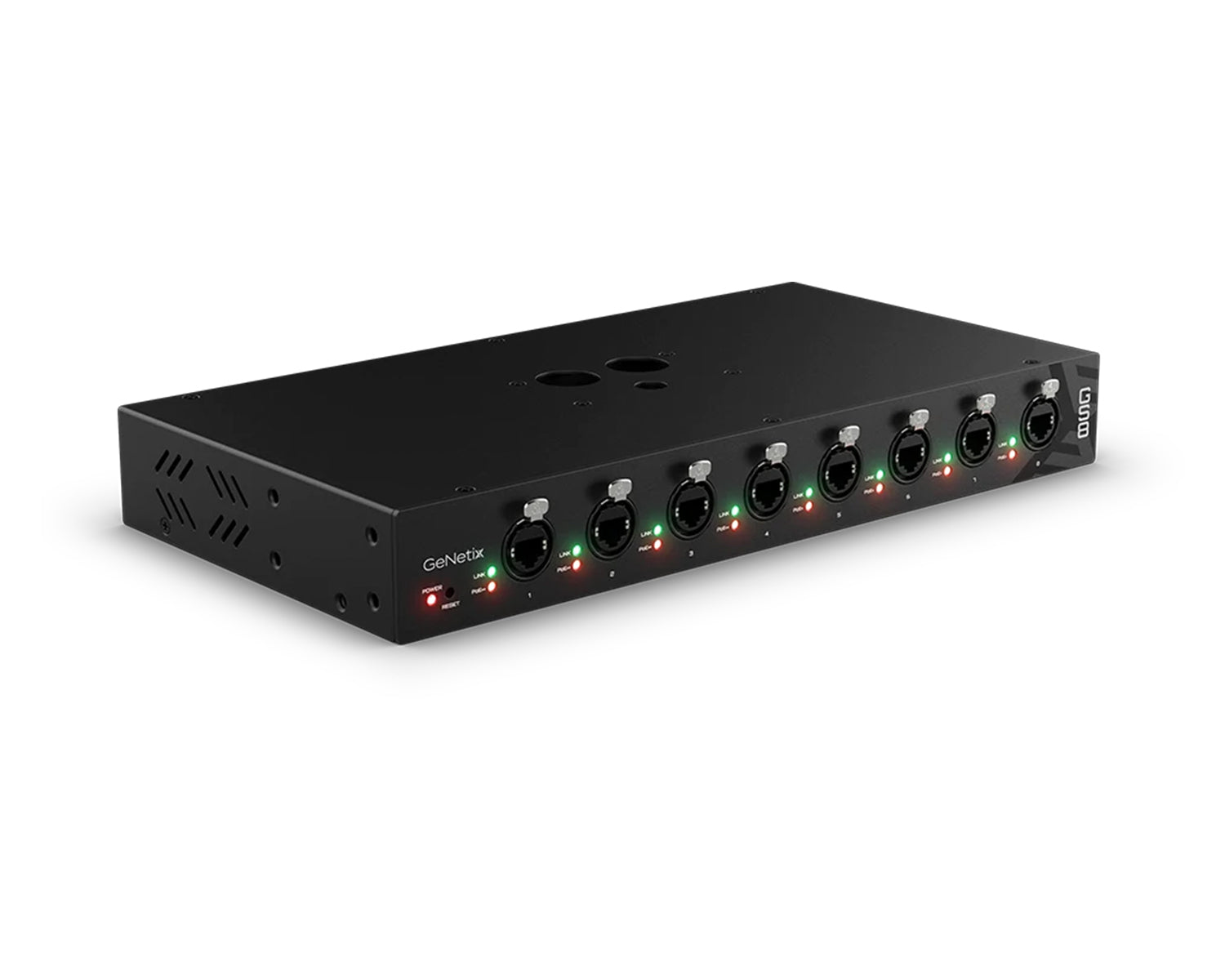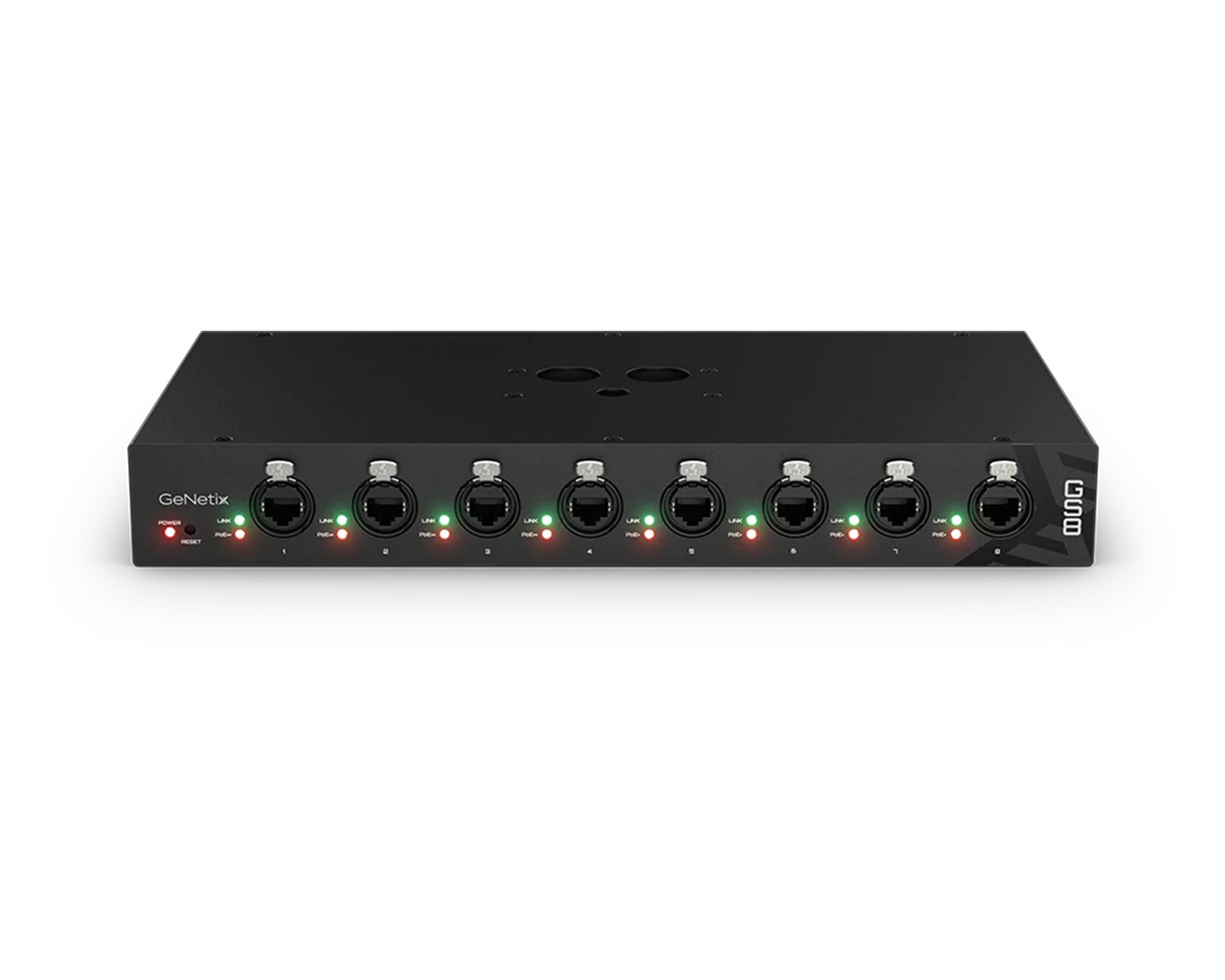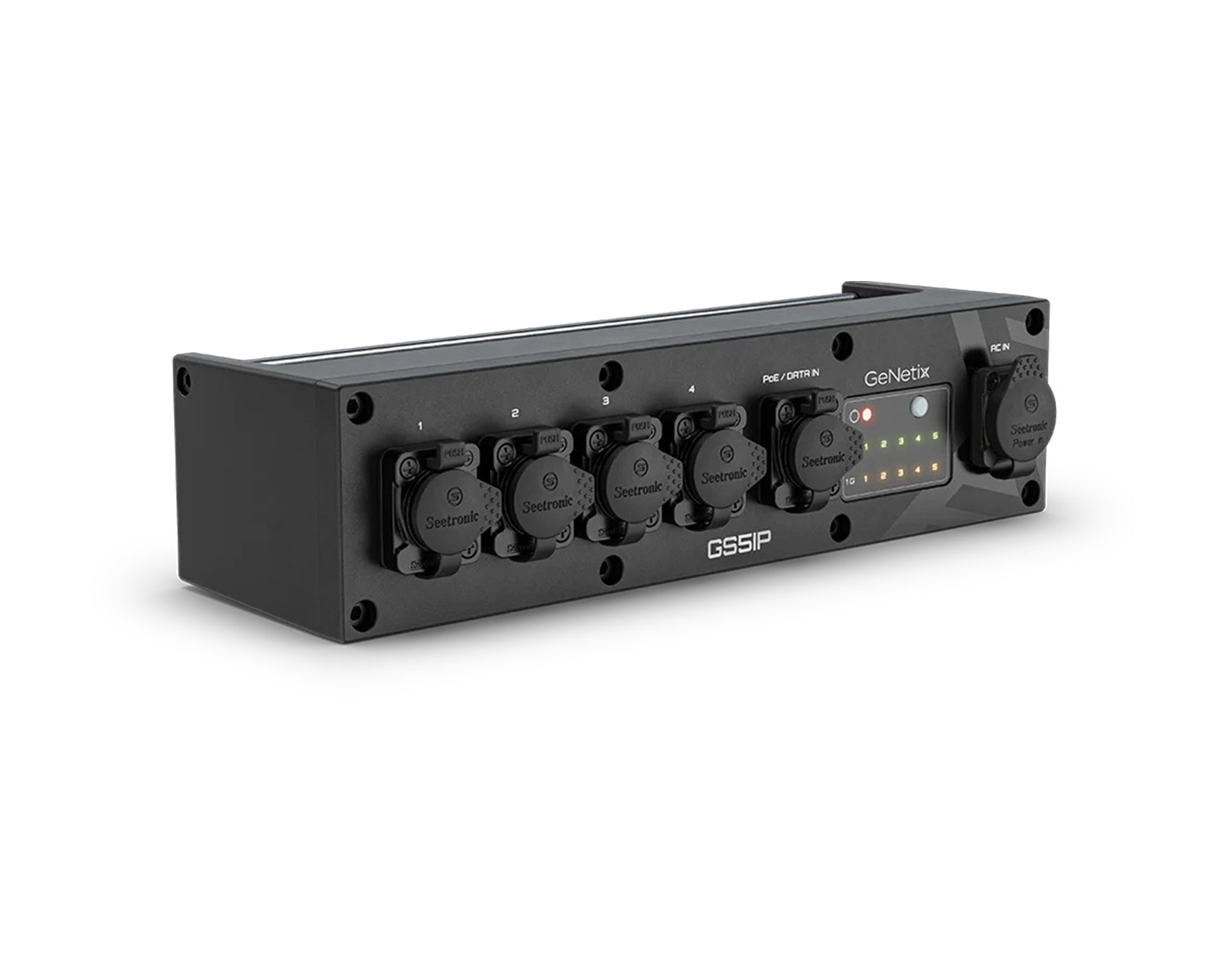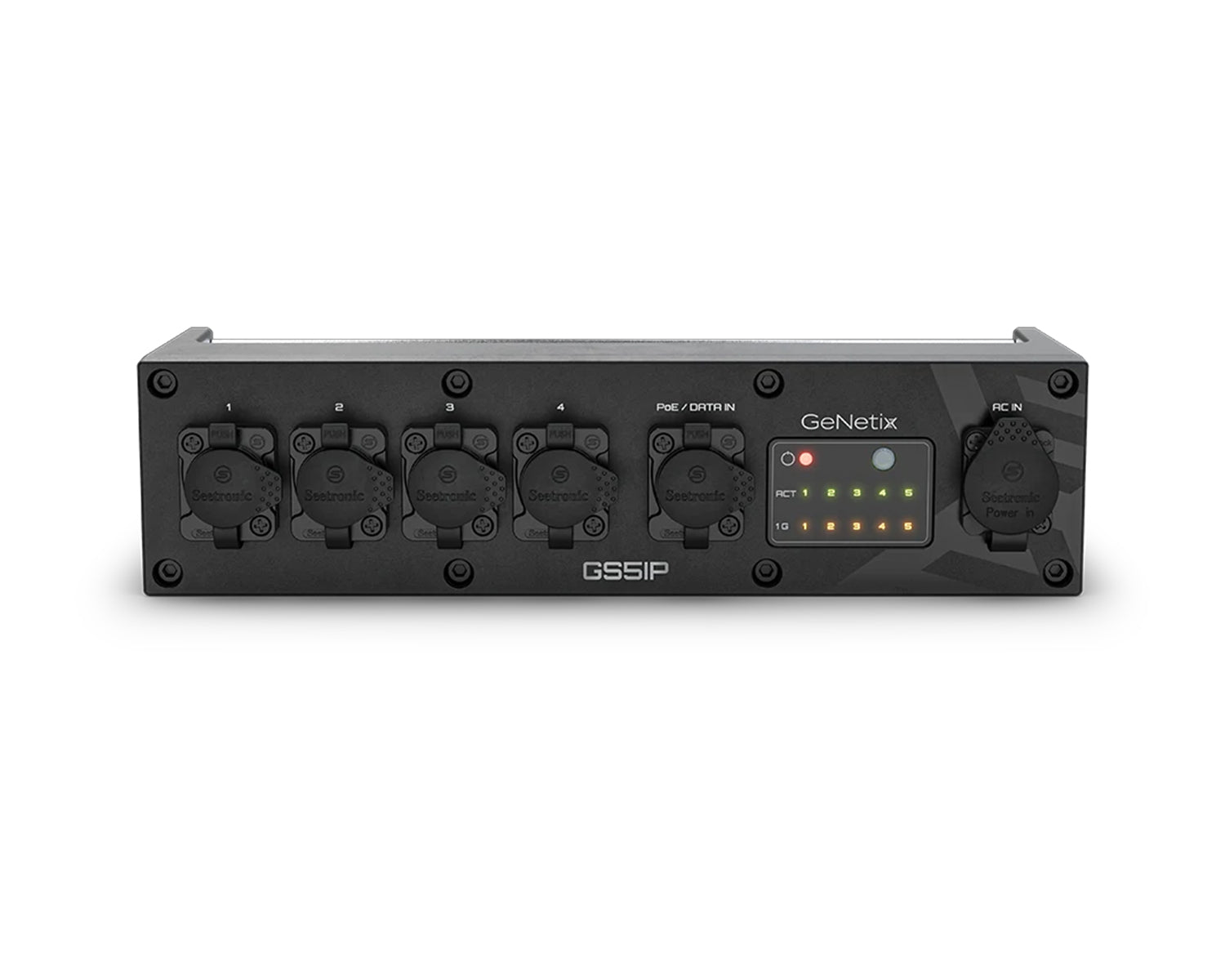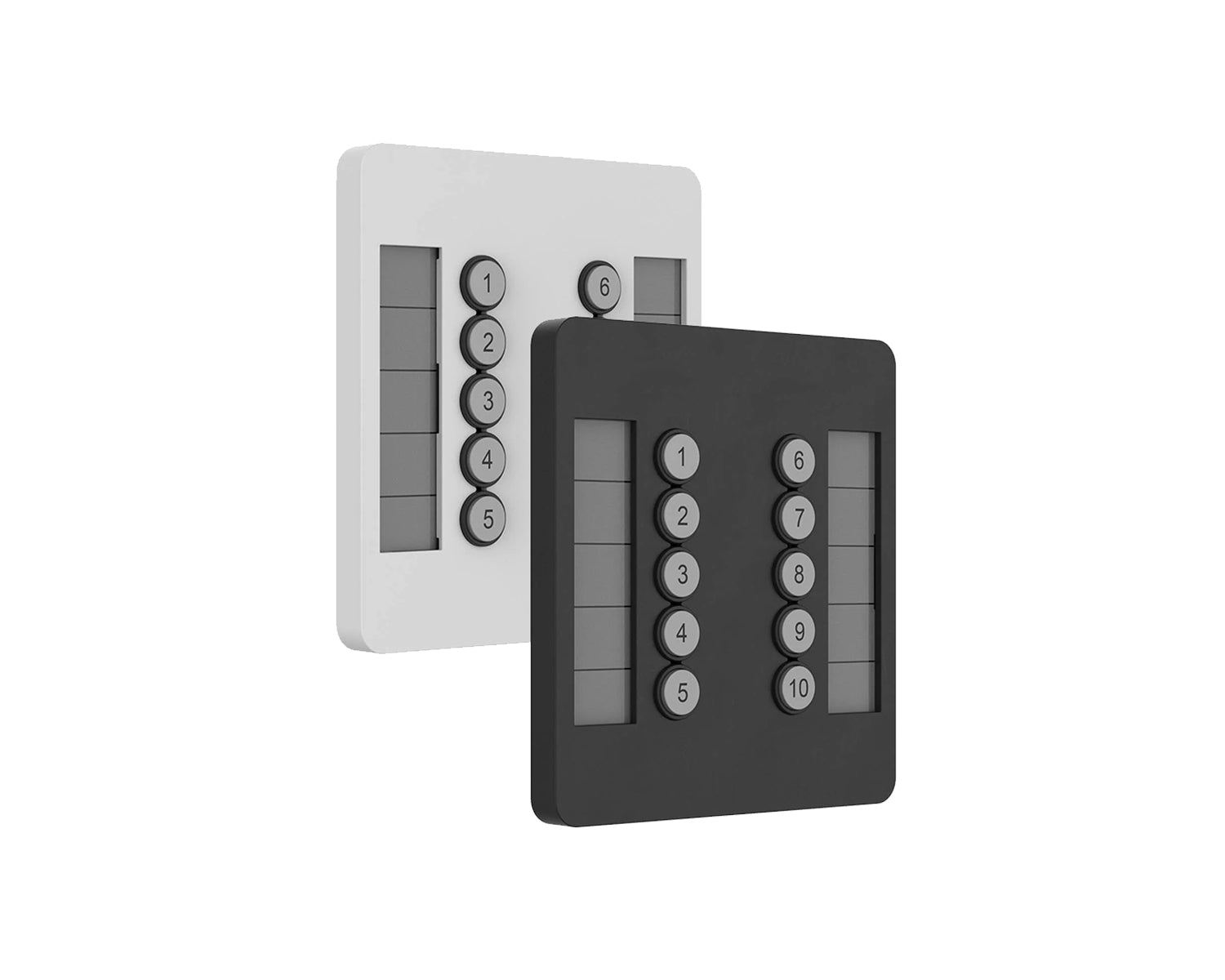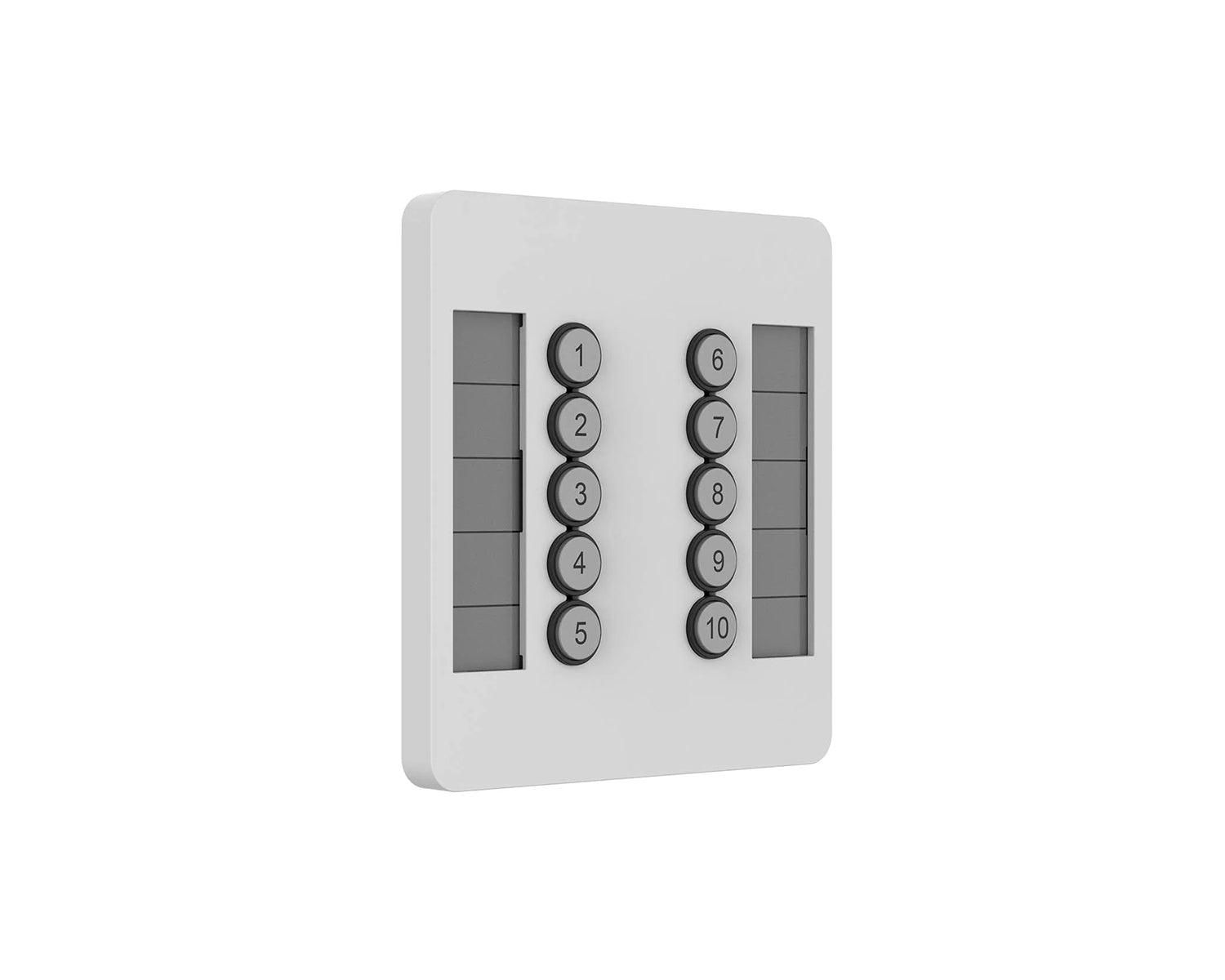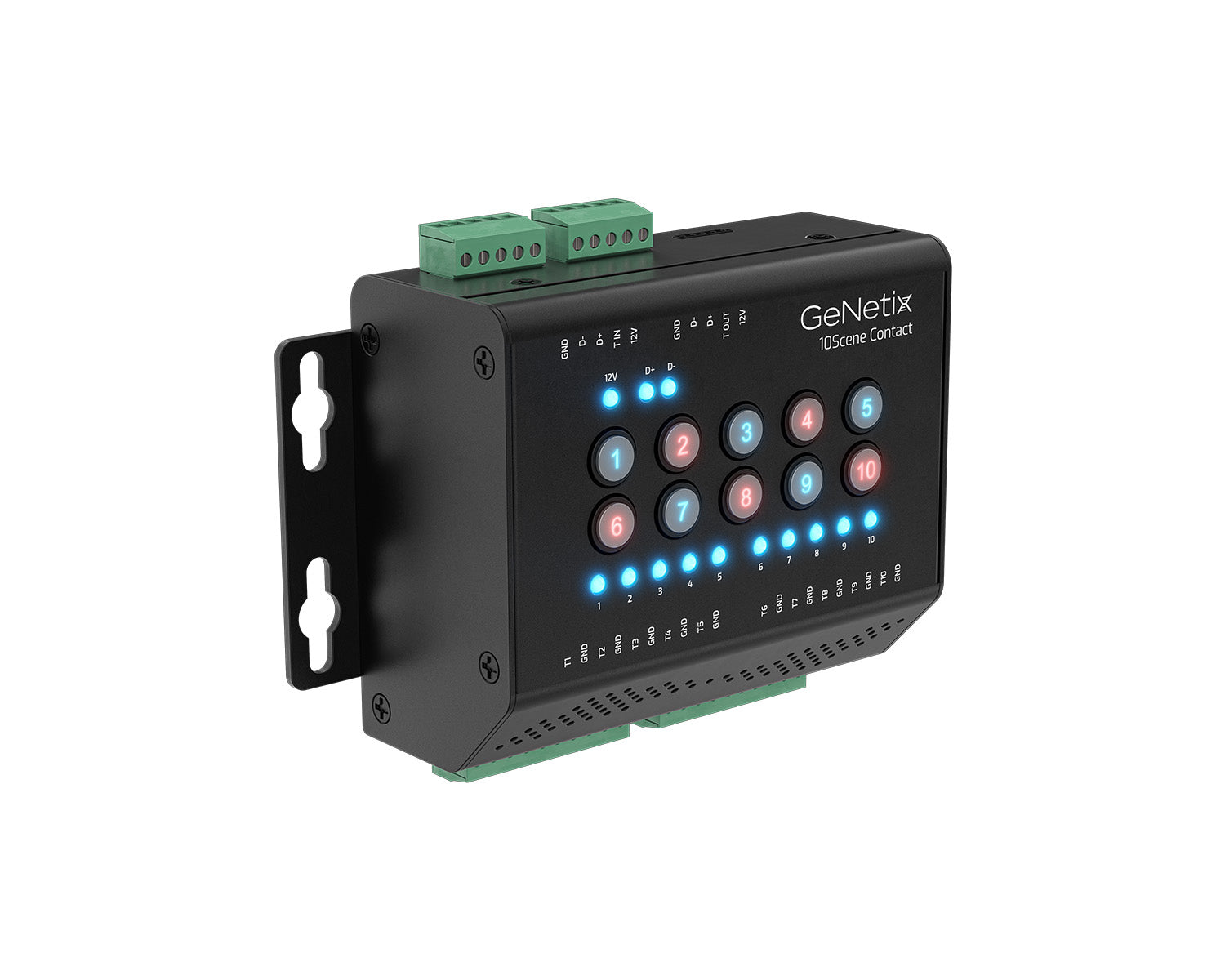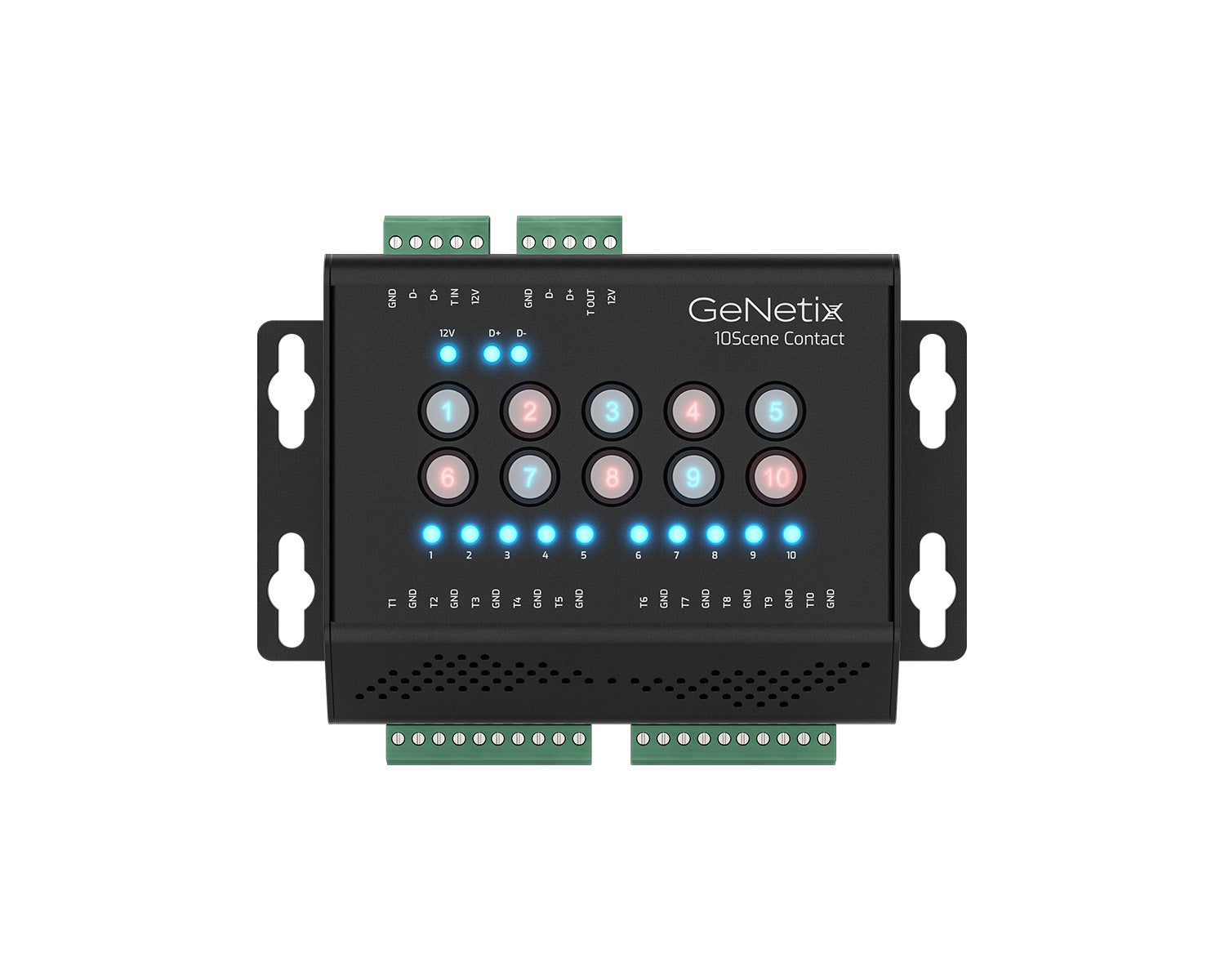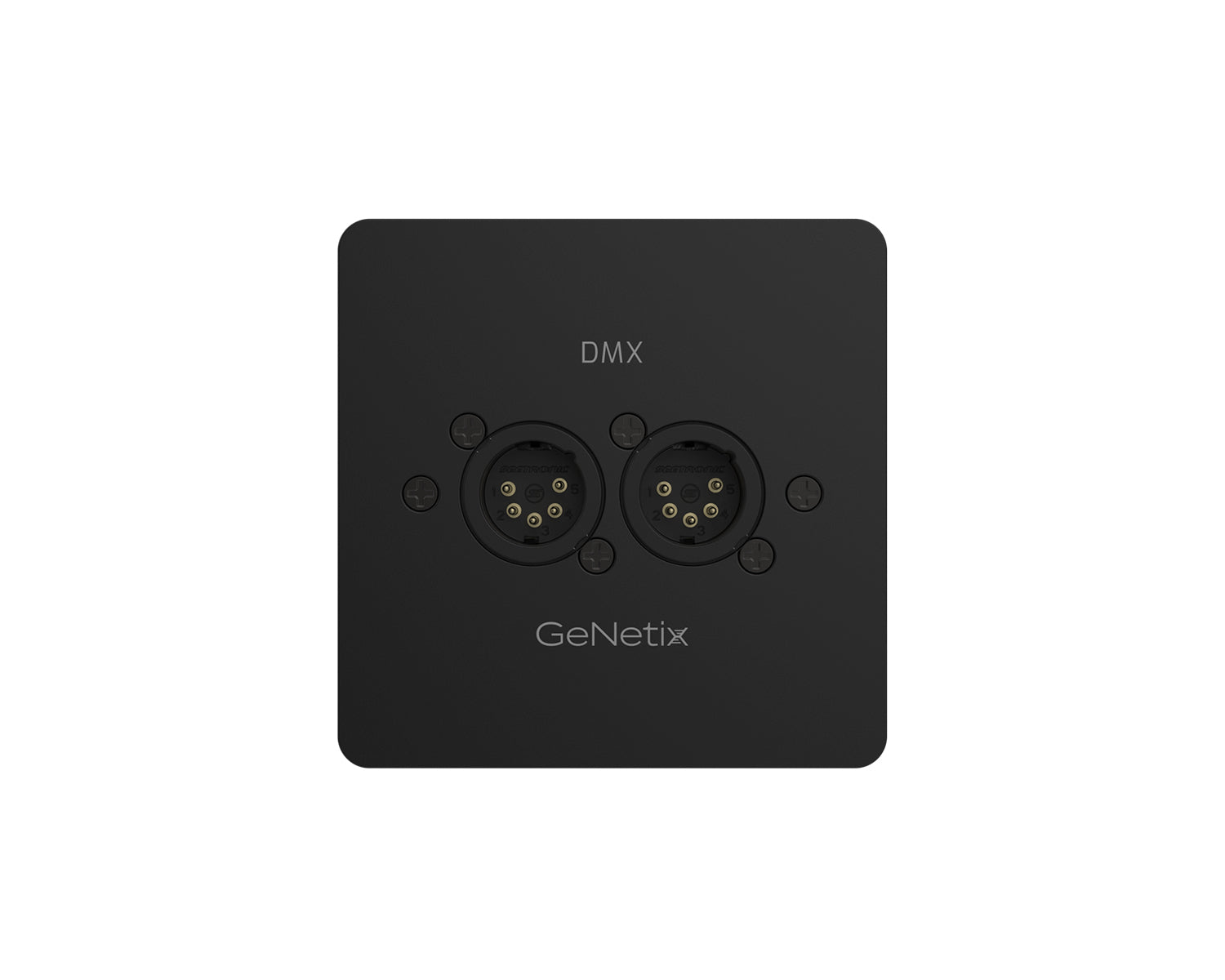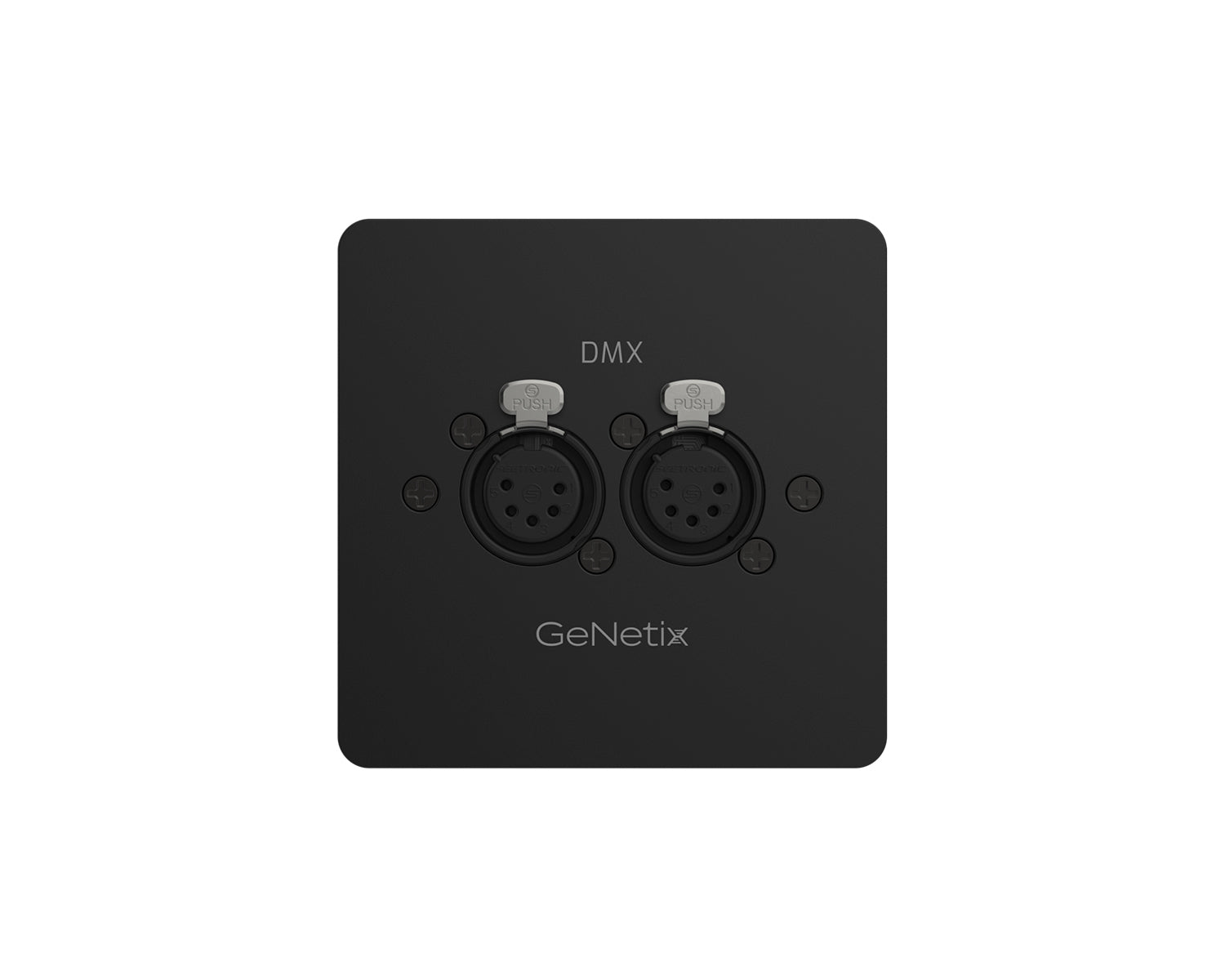Lighting control has never been more advanced, and with modern productions relying on complex data distribution, the right networking solution is essential. Enter the ChamSys GeNetix range: networking nodes designed to deliver robust, reliable DMX over Ethernet for live productions, permanent installations, and everything in between.
Whether you’re running a theatre, live event, music venue, or conference centre, GeNetix nodes make it easier than ever to set up, configure, and manage multiple universes of DMX with complete confidence.
To help us explore the line-up, ChamSys’ Tyler Lloyd joined us to highlight the features that make the GeNetix range stand out in the lighting industry.
Why GeNetix Networking Nodes Stand Out
The defining strength of the ChamSys GeNetix range is flexibility. These networking nodes are designed for both touring professionals and installers, offering plug-and-play simplicity with powerful features under the hood.

Key advantages include:
- PoE power on all nodes, with USB-C power on the GN2 and True1 in/out on the GN5 and GN10.
- Versatile mounting options including threaded inserts for clamps and screw holes for DIN rail mounting.
- IP-rated models for outdoor applications.
Lighting state storage: up to ten static lighting scenes can be stored directly on a node and recalled using button panels, making the node itself a stand-alone controller for smaller installs. - Fallback redundancy: ensuring that if a cable fails or a fixture goes offline, DMX continuity is preserved so your show runs without interruption.
Timecode & MIDI Integration
The GeNetix GN5 and GN10 nodes include LTC timecode inputs and MIDI in/out on the rear panel. This allows you to feed timecode or MIDI at stage level and distribute it across the network — no need for long multicore runs back to front of house. Better still, multiple consoles can share these signals, creating a streamlined workflow for larger networks.

Unlocking MagicQ Software
A great feature of the GN2, GN5 and GN10 is that they also act as an unlock for the ChamSys MagicQ software. The GN2 unlocks the software in “core” mode, while the GN5 and GN10 unlock the full feature set. MagicQ is already a powerful lighting control platform, but with the addition of GeNetix nodes it reaches the next level by enabling external control and networked operation.
Rounding Off the GeNetix Node Family
In addition to the three main nodes, the GeNetix family includes several models designed for a wide range of applications and environments.
The GeNetix wall plate nodes are available in two models: GW2I (inputs) and GW2O (outputs), each with two ports that can function as input, output, or fallback. Built into a single-gang UK back box (EU and US options also available) and supplied with black and white faceplates, these nodes integrate easily with venue décor. Powered via Ethernet, a single cable provides both data and power, allowing seamless integration into sets, IWBs, or distributed systems. Note: these models do not unlock MagicQ software.
The GN4IP is a rugged, IP-rated four-port node designed for outdoor and distributed stage applications. It can be powered via PoE or True1, making it ideal for stage deployments where environmental protection and flexible mounting are required.

Finally, the GN10 range includes two variants for permanent installations: the GN10R with 10 RJ45 ports, and the GN10P with 10 Phoenix terminal ports. These models provide versatility for fixed installations where robust, high-capacity connectivity is required.
This range ensures there’s a GeNetix node for every scenario, from touring rigs to permanent architectural installations.
Networking Switches Built for Lighting
Moving onto the switch side of GeNetix, we’ll take a closer look at the GS8. The GeNetix GS8 is a rackmountable PoE unmanaged network switch that follows the ChamSys philosophy: keeping things simple and working straight out of the box. This switch offers 8 front-facing network ports and supports up to 200W of PoE power directly from the device. This means you can power your GeNetix nodes, wall plates, or any other device that can be powered over Ethernet such as a PTZ camera. The GS8 supports PoE++ on the first four ports, allowing you to send up to 100W of power from a single port. The final four ports support PoE+ with up to 30W of power each. As mentioned, the total capacity of this switch is 200W and it works on a first-come, first-served basis.
The other switch in the GeNetix family is the GS5IP. Sharing the same enclosure as the GN4IP, the GS5IP is a five-port, IP-rated unmanaged network switch. Both network switches follow ChamSys’ philosophy of simplicity, reliability, and out-of-the-box functionality.

Real-World Applications
The ChamSys GeNetix range is not just for large-scale tours. These networking nodes excel in theatres, bars, conference centres, houses of worship, and hospitality venues. Check out our video to see a live demonstration of the GeNetix range in action!
Some practical examples include:
- GeNetix 10Scene Wall Plate for house light and stage light control.
- Contact closure inputs via Phoenix connectors — perfect for integrating existing wall switches or emergency systems.
- Hot Takeover: a unique MagicQ and QuickQ feature that lets any console on the network take control seamlessly. This is ideal for venues hosting guest consoles or needing reliable backup solutions.
Why Choose ChamSys GeNetix?
As lighting fixtures become more advanced with effects, channel counts also increase, with some complex moving heads taking more than one universe at full operation. This reduces the capability of a single DMX cable. For larger systems, you’d also need to run multiple DMX cables from the controller.
This is where Art-Net, sACN, and ChamSys’ GeNetix range come into the picture. These two protocols allow you to take DMX data and push it through a network. Using these protocols, you can carry up to 64,000 universes of DMX (32,768,000 DMX channels). Whilst the DMX data travels through the network cable, you still need something at the other end to convert this back to a 5-pin DMX connection. Most fixtures still require a 5-pin DMX input, although newer and higher-end fixtures can include network ports to accept direct connections. Typically, however, 5-pin DMX remains the standard. This is where the GeNetix nodes come in: they take the Ethernet cable and split it into multiple universes of 5-pin DMX.
With features that protect your show, streamline installations, and expand control possibilities, GeNetix networking nodes are a future-ready solution for modern lighting control. Combined with MagicQ integration, they deliver the power, reliability, and flexibility that professionals demand.
GeNetix: Power, Flexibility, Reliability
From compact wall plates to rugged IP-rated nodes and high-capacity switches, the ChamSys GeNetix family delivers a complete networking solution for any lighting environment. With features like redundancy, timecode and MIDI integration, MagicQ unlocking, and stand-alone scene storage, these nodes are designed to keep your show running smoothly while making setup and control easier than ever.
We stock the full GeNetix range, talk to our team today on 01525 850085 to find the right solution for your next project.

